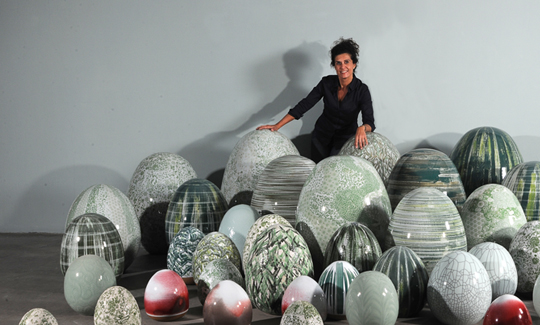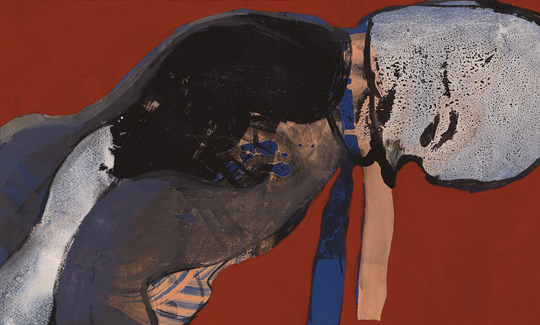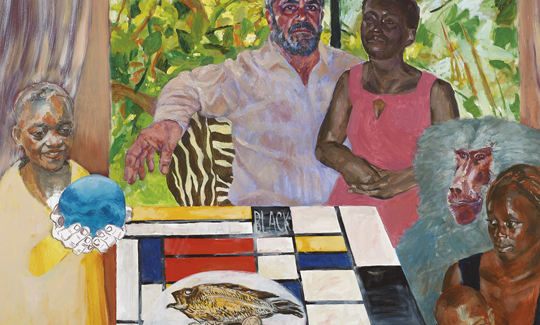Post-postmodernism ≠ Utopia
The new exhibition cluster
Saturday, 23.07.16, 20:00
Saturday, 21.01.17
Curator :
Svetlana Reingold
Curator "Oscillation":
Revital Silverman Grun
Curator "Yearning for the Myth":
Limor Alpern
More info:
04-9115997Post-Postmodernism ≠ Utopia
From modernism and the metaphysical ideal, through postmodern dystopia, contemporary art seems to be returning to a utopian vision of the future. The preoccupation with this vision in today's art world is the point of departure of the present cluster of exhibitions, which seeks to examine the emergence of post-postmodernism, a movement gaining strength in recent years. This approach reflects the attempt of the current generation to overcome the postmodernist trends of the late twentieth century, as a response to the present, crisis-ridden era.
"A specter haunts contemporary art – the specter of Modernism," wrote writer and critic Brian Dillon in 2010. "The end of modernism," "the end of ideology," "the end of history" – these were familiar concepts in the dystopian postmodernist discourse of the late twentieth century. As opposed to postmodernism, modernism represented an optimistic spirit, which, like the ethos of the Biblical prophets, had a utopian aim and faith in the possibility of social reform. The return to the vision of the future touches on the concept of the "unity of times" as the prominent characteristic of contemporary art. According to scholar Peter Osborne, contemporary art is characterized by "times" that are different but equal in the sense that they are all "present." Past and future meet constantly and base themselves on each other visually.
For some scholars, our era is the direct continuation of the postmodern quandary. Curator and theoretician Boris Groys notes that modernism was characterized by a repression of the present so as to create a better future, for example in the utopian conceptions of the avant-garde. By contrast, "contemporariness" is characterized by a passive attitude and a sense of ongoing suspension ever since the fall of the Communist Block. Other scholars contend, to the contrary, that contemporary culture constitutes a break from postmodernism and a call for a renewed avant-garde. Contemporary artists look back in order to "contemporize" the modernist idea and thereby construct the vision of the future.
Why do artists feel the need to create a new form for the modernist futuristic vision of the twenty-first century? Dillon, following writer and critic Raymond Williams, argues that the guiding impulse of this new trend is a desire to revive the radicalism and the communal ideal of the past, and to shatter postmodernism's non-historic fixation. For curator and art scholar Nicolas Bourriaud, modernism offers a kind of "cultural exodus," a chance to escape the standardized limitations of consumer culture and the alienated mass society. As such, art must take part in the contemporary global dialogue.
The current exhibition cluster is divided into three main parts, each of which refers to the construction of the utopian space – as a fortress of hope for socio-political change and its promotion in contemporary art.
The first part centers on Jerusalem, as the ultimate symbol of the eternal space of the world, where all entities eventually merge and become one. The works presented in this part reflect the ways in which the engagement with Jerusalem as a utopian ideal relates to the contemporary cultural discourse and the futuristic vision.
The second part addresses the link between Israeli modernism in the 1970s, which combined an engagement with metaphysical space and the possibility of rectifying the world order, and contemporary art. The renewed interest in the role of the artist as shaman, as a healer of society's ills, is related to the rekindled need for a sense of community in the Western world and in the artistic discourse.
The third part examines the futuristic vision guiding the creation of new ways of life in contemporary Israeli art. Ideas investigated in this context include the lost idyll of the Zionist vision, the mythic world of ancient Greece, the "new world order" of post-colonialism, and the utopianism of the technological world. These various types of utopia comprise the complex issue of the vision of the future in Israeli art of the twenty-first century.




